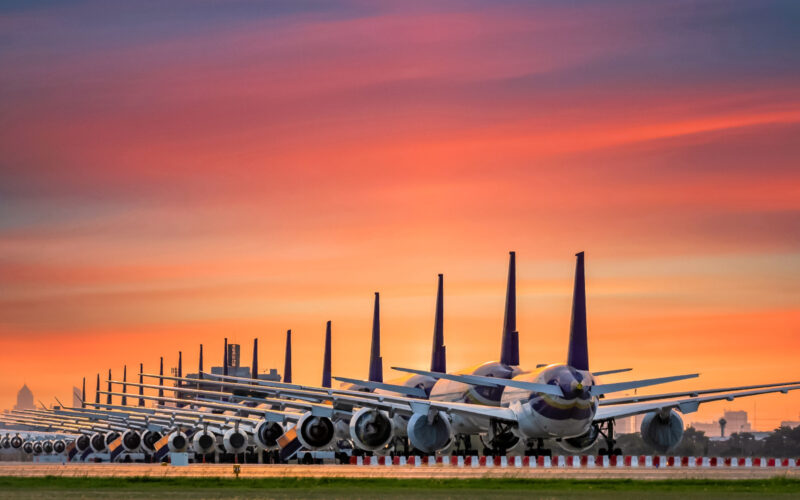Understanding the Categories of Aviation: Business, Commercial, and General

Aviation is a diverse field with three main categories: business aviation, commercial aviation, and general aviation. Each category has distinct purposes and covers a wide range of aircraft and services.
In this article, we will explore general aviation in detail and compare it with business and commercial aviation to highlight their differences, applications, and significance within the aviation industry.
Defining the Categories:
- Business Aviation: Business aviation is all about private aircraft used by corporations, entrepreneurs, executives, and high net-worth individuals for business-related purposes. It includes various aircraft, from small jets to long-range planes, usually chartered or owned by businesses to meet their specific travel needs.
- Commercial Aviation: Commercial aviation focuses on scheduled passenger and cargo services provided by airlines. These airlines operate fleets of aircraft to transport paying passengers and goods between destinations worldwide.
- General Aviation: General aviation covers all civil aviation activities that are not part of commercial or military operations. It includes a diverse range of flying activities, such as private flying, recreational flying, flight training, agricultural aviation, emergency medical services, and aerial photography.
Purpose and Audience:
- Business Aviation: The primary purpose of business aviation is to offer flexibility, efficiency, and privacy to companies and individuals with demanding travel requirements. Corporate jets enable executives to reach remote locations and multiple destinations in a single day, enhancing productivity and time management. It allows face-to-face meetings, confidential discussions, and quick responses to business opportunities and emergencies.
- Commercial Aviation: Commercial aviation caters to the general public, providing mass transportation services for passengers and cargo. Airlines connect people and goods across continents, playing a crucial role in tourism, trade, and the global economy.
- General Aviation: General aviation serves a wide range of purposes and audiences, including private pilots, recreational fliers, flight schools, aerial surveyors, humanitarian organizations, and law enforcement bodies. It offers diverse services, from leisure flying to specialized missions and emergency responses.
Types of Aircraft:
- Business Aviation: Business aviation offers various aircraft types to meet different needs, from small jets for short trips to mid-size and super-midsize jets for longer-range capabilities and increased passenger capacity. Large-cabin jets are preferred for intercontinental and ultra-long-range travel.
- Commercial Aviation: Commercial aviation operates a diverse fleet, ranging from regional jets and narrow-body airliners for short-haul flights to wide-body aircraft for long-haul travel. These aircraft cater to different budgetary requirements and comfort preferences.
- General Aviation: General aviation encompasses a wide range of aircraft, including single-engine piston planes, multi-engine propeller aircraft, helicopters, and specialized planes like agricultural aircraft and air ambulances.
Accessibility and Flexibility:
- Business Aviation: Business aviation offers flexibility by utilizing smaller airports, reducing travel time and providing access to destinations not served by commercial airlines. It allows passengers to create personalized itineraries and adapt to last-minute changes.
- Commercial Aviation: Commercial aviation provides extensive accessibility with regular routes to numerous cities worldwide. Passengers can book flights well in advance, but they are subject to fixed schedules, potential delays, and longer check-in and security procedures.
- General Aviation: General aviation offers considerable flexibility, allowing private pilots and aircraft owners to fly to various destinations, including small airports and airfields.
Cost and Economics:
- Business Aviation: Business aviation can be costly, considering aircraft ownership, operational expenses, and maintenance. However, the efficiency gains and productivity benefits for businesses can outweigh the expenses.
- Commercial Aviation: Commercial aviation offers a more cost-effective option for individual travelers, benefiting from economies of scale and loyalty programs.
- General Aviation: The costs in general aviation can vary widely depending on aircraft type, ownership, and usage.
Safety and Regulations:
- Business Aviation: Business aviation adheres to rigorous safety standards, with well-maintained aircraft and trained pilots utilizing advanced technologies.
- Commercial Aviation: Commercial aviation follows stringent safety regulations imposed by aviation authorities, making air travel one of the safest modes of transportation.
- General Aviation: General aviation prioritizes safety, with pilots undergoing appropriate training, although there may be some flexibility due to the diverse range of operations.
By understanding these three main categories, we can appreciate the diverse and essential roles they play in the dynamic world of aviation.
